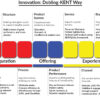
Inspired by Robin Sharma’s quote: “All change is hard at first, messy in the middle, and gorgeous at the end.”
Change is the pulse of growth but is hardly ever a smooth symphony. Instead, it is often the sound of chaos before it becomes the sound of clarity. In the life of all — the leader, the sojourner, or the quiet enthusiast — change comes in the manner of a storm. Robin Sharma’s now-legendary words, “All change is hard at first, messy in the middle, and gorgeous at the end,” nail the turbulent arc with elegance and accuracy. These few lines have illuminated the way for all who traverse personal wars, professional doubts, or existential uncertainties. To comprehend their insight better is to comprehend the human spirit when pushed beyond the boundaries of convenience.
All meaningful change always comes with difficulty. This is the moment when inertia contests ambition, when the voice of fear outweighs faith. The very first step—quitting an enviable job for the passion for doing something, accepting abstinence, initiating a new regime on health, or gathering courage to say the word “I want more” out of life—is the toughest. We are reminded of the Indian epic Mahabharata’s young warrior-prince Arjuna. Having reached the edge of the war, he was paralysed—not by weakness, but by the overwhelming emotional intensity of the moment to come. In the Bhagavad Gita, this existential resistance to change is its point of departure, and Lord Krishna’s counsel is something most of us would better attend to: the sense of purpose has to outweigh the sense of transition.
In the modern age, the same fear attends all entrepreneurial endeavours. Take the instance of India’s ex-President and scientist, the beloved Dr. A.P.J. Abdul Kalam. Way before he earned the sobriquet “Missile Man of India,” he had known rejection and defeat. His initial satellite program flopped, but he took the failure as one stepping stone. According to him, “failure will never overtake me if my determination to succeed is strong enough.” Such is the initial transition period that is difficult as it requires faith without proof, work without achievement, and vision when all is clouded with gloom.
The farther you go into change, the process is messy. This is the middle—where you’ve gone beyond where you can turn back, yet aren’t close enough where the horizon comes into view. This is the disorienting, draining, sometimes lonely place. Doubts start taking over. You stop making progress. You ask where everything went wrong. This transition is exactly epitomized by the shape of the caterpillar in its cocoon. Transformation is not smooth; inside the cocoon, the caterpillar breaks down into a cellular stew. Literally, it becomes unrecognizable before it is reformed as a butterfly. And in life, the messy part of change is where the old who-am-I goes away but the new one hasn’t yet shown up.
Take the example of Steve Jobs, who was expelled by Apple—the company he had co-founded. That period of his life was so chaotic. But it led him to found NeXT and transform Pixar. When he went back to Apple, he came not as the man he used to be, but as the transfigured seer who would change the face of personal technology for all times. Closer home, the biography of spiritual teacher Eknath Easwaran offers us another compelling example. When he came to the United States to settle down after his sojourn in India, he was up against isolation, rejection, and conflict of cultures. And yet, out of that chaos, was born the seed of a calling that would connect Eastern wisdom with the West’s searchers. His translations of the ancient Indian scriptures and his instructions on meditation have rewritten the lives of countless people.
Eventually, if one persists long enough, the mess gives way to magnificence. This is the “gorgeous” part—the end that Sharma refers to. It’s not merely the reward of success, but the deep, soulful satisfaction that comes from knowing you became someone stronger, deeper, and more aligned in the process. The reward is not the butterfly, but the becoming.
J.K. Rowling’s narrative is representative of this period. When the world was yet to discover the name of Harry Potter, she was a welfare mother who had been turned down by several publishers. Her resilience through the chaos bestowed the world with a literary icon who defined the course of an entire generation. India’s Flying Sikh, Milkha Singh, was an orphaned kid who had run barefoot through the devastation of Partition and poverty. But he ran all the same—until he ran so quickly that he became a national legend. Both saw the journey not as linear but as an eventual un-folding of the grandeur locked inside the struggle.
There may be no parable better capturing this timing than the story of the Chinese bamboo tree. You plant the seed; you have to water the seed daily for possibly five years—never once seeing growth above the ground. Then, poof! In the fifth year, it will spring up 80 feet in six weeks. What was the tree doing all that time? The roots were growing deep, building up the foundation for something tall, strong, and grand. Similarly, when nothing on the surface appears to be progressing, chances are that we are growing in ways that aren’t seen.
This is the nature of all meaningful change. It begins with resistance, it moves through chaos, and if we hold on—if we don’t let go too early—it reveals something extraordinary. The discomfort is not a sign to quit; it is the cost of transformation.
So next time you’re standing on the brink of the tough choice or stuck in the middle of the ambiguous journey, remind yourself of the arc Sharma writes. This is not the flaw in the process. This is the process. Trust that the mess has purpose, the hurt has meaning, and the beauty on the other side is all the struggling for. Have you been waiting to make the change you know you need to? Start today. Get that first sentence written down. Fire an email. Apologize. Offer help. Get back up. Because the best life on the other side is waiting for the one you’re afraid to leave. When the soul is ready, the change will happen. And when it has, walk towards it—not in fear, but with the tender knowledge that when tribulations begin things, they often conclude with grace.
Leave a reply

















Dear Dr. Prahlada N.B. Sir,
Your blog post, "The Beautiful Arc of Change: From Struggle to Splendor," is a masterpiece ✨.
Your words weave together inspiring anecdotes and timeless wisdom, resonating deeply with readers 🌟.
Your引用 of Robin Sharma's quote perfectly captures the essence of transformation 🔄. The examples of Dr. A.P.J. Abdul Kalam, Steve Jobs, and Eknath Easwaran illustrate the power of perseverance and faith 💪.
The Chinese bamboo tree story reminds us that growth often happens beneath the surface 🌱.
Your words, "The discomfort is not a sign to quit; it is the cost of transformation," echo deeply within us 💫.
Thank you, sir, for sharing your wisdom and inspiring us to embrace change with courage and resilience 🙏.
Reply